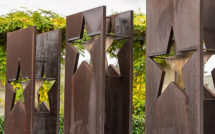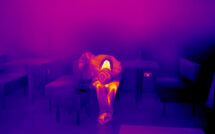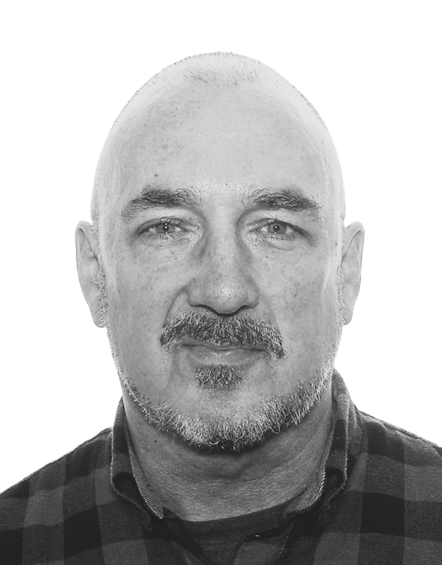
Helping People Affected by Homelessness Through Creative Photography: An Interview with Paul Ryan

This is part of our special feature, Homelessness and Poverty in Europe.
Official government snapshot statistics in the UK have shown that in the fall of 2022 the number of people sleeping rough in England was on the rise for the first time since 2017 and went up by 74 percent since 2010.[1] In 2023, the Big Issue, a leading social enterprise in the UK, chose Paul Ryan and Michael Wong as two of their top 100 annual changemakers for their work as cofounders of Café Art, a nonprofit organization launched in 2012 as a way to foster exchanges for a greater understanding of people affected by homelessness. The name of the organization is based on the initial project that consisted in hanging on the walls of some cafés in London artwork created by homeless people. Out of Café Art emerged the MyLondon printed calendar project, through which homeless people have been able to not only reveal their vision of the city and connect with the public through photography but also appropriate urban spaces from which they are often excluded and where they are often unseen.
I spoke with Paul Ryan about his involvement in this creative and entrepreneurial endeavor. Through his various activities, Ryan has always sought opportunities to make a difference in the lives of the most vulnerable, whether in New Zealand, where he is originally from, in London, or in Vancouver, Canada, where he first managed a project involving homeless people. In this interview, he shares with EuropeNow the way Café Art has evolved into two organizations and the recent developments that have brought him to collaborate with a charity organization in Mumbai, India. He focuses on the recent launching of the MyWorld charity, a spin-off of the MyLondon project for which homeless people in London have taken pictures with handed out disposable cameras since 2013. He speaks about the main goals and accomplishments of the project, as well as current and foreseeable challenges and opportunities. The organization’s website mentions that “the goal of MYWORLD is to empower photographers and artists though creativity and entrepreneurship with our homeless-sector partner organisations.” The project is indeed designed not only to help people financially, but also to heal them, to connect them with other people, and to put homelessness at the forefront of debates about the urban. Through MyWorld, Ryan has been able to place homelessness at the heart of an international network of cities. These cities, although different in so many ways, have much in common, not only because of the chronic presence of homelessness there but also because of the commitment of local actors to do something about it through creative means that bring agency and dignity back into the everyday lives of those who may have lost hope.
—Hélène B. Ducros for EuropeNow
EuropeNow Café Art was created in 2012 and was registered as a community interest company in 2013. How did the organization come about? What has been the journey to anchor it in the landscape of nonprofit organizations addressing homelessness in London?
Paul Ryan We now run two organizations. First, there is Café Art, which has indeed been registered as a community interest company since 2013—in the US, it would be called a nonprofit organization. It is also called a social enterprise. In fact, after joining the organization, I attended the School for Social Entrepreneurs in London. Michael Wong and I have run Café Art as a business, selling products to the public to generate a revenue. We frame and place in different venues—such as cafés—artwork (paintings, drawings, or photographs) that has been created by homeless people, allowing them to connect with the public, earn an income, and regain confidence in themselves. We also arrange for art rentals and sales, which further provide the artists with a revenue. At one point, we extended the project and started producing a calendar of photos taken by homeless people; this project would later become the MyLondon printed calendar. Initially, we printed a calendar called “ONE,” in which we included photos of artwork created by people affected by homelessness. In 2013, we organized a contest after distributing 100 disposable cameras to homeless people and decided to create the 2014 MyLondon calendar out of a selection of the photos we received. Since then, every year (apart from 2020 and 2021), we have handed out 100 disposable Fujifilm QuickSnap cameras.
Since the COVID-19 pandemic, we have stopped hanging art in cafés and instead focus on office buildings. These activities help the artists, who are all people affected by homelessness. They earn money from the art rental—one third of the rental fees charged go to the artists. Finally, we organize art exchanges with cities across the world. Organizations interested in exchanging paintings with homeless artists from London contact us, and we organize the exchange. We send the paintings to be framed in the city of arrival, and the charity in the hosting city funds the venue. In return, we can also host art from different places in the world.
In 2015, we did a Kickstarter crowdfunding to support the creation of the MyLondon photo calendar. Unlike projects other charities might organize, MyLondon is based on creating something for people to buy; in fact, the sale of our different products (calendars, photos, or cards) constitutes our main source of income. Other charities might get grant funding to create projects. We operate differently. Instead of getting funding and spending the money on one project that eventually ends, we sell our products directly to the public, share the profits with participants, and reinvest in the project to make it sustainable. People participating in the MyLondon project can earn money in two ways: through a photography prize and through the sales of products we generate from the photos. The prize amounts to £2000 in total and is divided among 48 participants. We have offered these awards every year since the onset of the project.
By chance, we went viral in 2015, with 200 media around the world featuring us in the US, the EU—mainly in Germany—South America, Australia, and Japan. This publicity put us in the position to help other cities create their own “MyCity” projects—as we called them then. These projects have now evolved into MyWorld, a new organization we have established over the last two years and where I see the future of our action lie. MyWorld has recently been registered as a charity with the main goal of helping organizations in other cities around the world do what we have done with the My London photography project, which was designed to both empower people affected by homelessness through their participation in the project and help them financially by providing them with a way to earn an income.
EuropeNow What is the process? How do you find participants for the MyLondon project? How do you make contact with interested photographers? And who buys calendars and cards—everyday people or corporate partners?
Paul Ryan To find participants, we visit art groups and day centers administered by homeless charities in London and provide basic training in how to use a singe-use film camera. We connect with people affected by homelessness when they are already in the system, which means that they have already connected with a homeless charity, such as an art group. There are hundreds of people who are sleeping outside, but we do not approach them to take part in the project. We feel that it would put them at a disadvantage, since they might decide to join out of desperation rather than because they want to. However, on the day we distribute the cameras, everyone is welcome to pick one up. The handout takes place in a private room of St. Paul’s Cathedral’s crypt. Within a few days, participants return the cameras to us after taking photos that illustrate what they love in London. What we attempt to do is help people think positively about where they live. We then have the films developed and organize an exhibition for which each photographer chooses three photos to contribute. Then, we create a calendar and print cards and photos, which we sell. This process allows people who are rough sleepers to be employed. The project is all about people earning money out of what they created.
The people selling the calendar may not be the photographers themselves. For the most part, the people selling the calendar are “sleeping rough,” which in the UK means they sleep outside or they are not in the system. Many people who take the photos we print have been homeless but live in hostels. If they live in government funded hostels, it means that they have to declare what they earn. Many people who live in hostels and have mental health issues cannot hold a job; therefore, they rely on government subsidies. If they started selling the calendar and earn an income, their benefits would be cut and they might become homeless again on the street. That has been a bit of a problem for us, because we could probably help many more people who are in poverty; but some are scared to sell the calendar because they might lose the only income they have, which comes from the government. Most people who sell the calendar are not that young; the typical vendor is a man in his fifties.
We have a few corporate buyers, who might buy 100 calendars each year. We also have several hundred people who fund the printing of the calendar through pre-orders. Our annual pre-ordering campaign, which used to be on Kickstarter now occurs directly on our own website; it is extremely helpful to us to fund the project. Most of the online buyers are everyday people in the UK, the rest of Europe, and the US. Many are in Germany because we were covered in the German media in 2015 and again in 2016. These sales help us cover the printing cost. However, the majority of the people who buy the calendar are London’s commuters who travel through train stations on their way to work. They notice the table where we set up the calendars and cards for sale. We also sell out of Spitalfields Market, which is a large market in east London where people go to buy designer clothes and goods. So, most of our UK buyers come face-to-face with the vendors who are people who have been affected by homelessness.
EuropeNow Why have you chosen to produce a calendar? How do you think that medium effectively connects the wider public with homelessness?
Paul Ryan Calendars are getting old-fashioned, because people have calendars on their phones nowadays. But calendars are creative and artistic and allow people to put a bit of art on the wall. Calendars also allow for the project to remain annual, rather than being a one-off event. The calendar constitutes an effective way to connect people with a difficult topic like homelessness because it does not ask them to make a huge commitment in supporting homelessness awareness. The threshold of engagement is low. We do not go around asking people to buy a book about homelessness; however, people can decide to connect with us and what we are doing through our website. Another way we connect with the wider community is by showcasing quality photography (see below for samples out of the photos selected as the top 25 in this year’s MYLONDON competition). As people see photos they like, they also realize that the photographers are everyday people who simply happen to be homeless. For us, the calendar is an easy way to start the relationship, to spread information, and to foster an understanding about homelessness and about how to fight it.
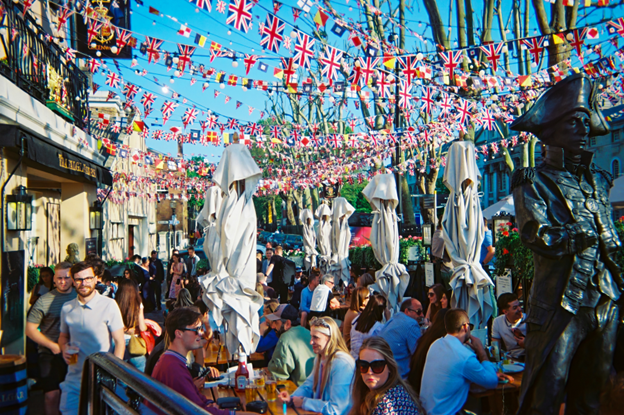
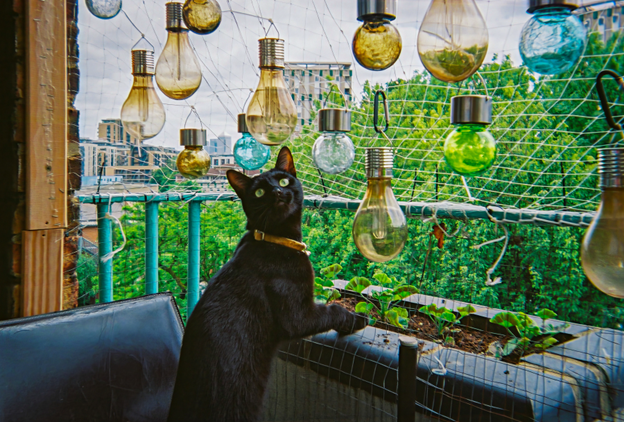
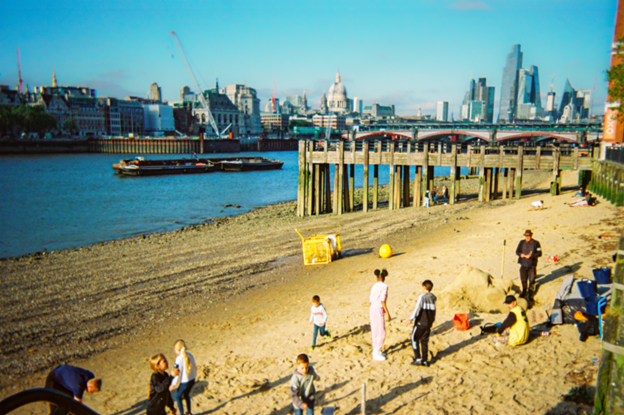
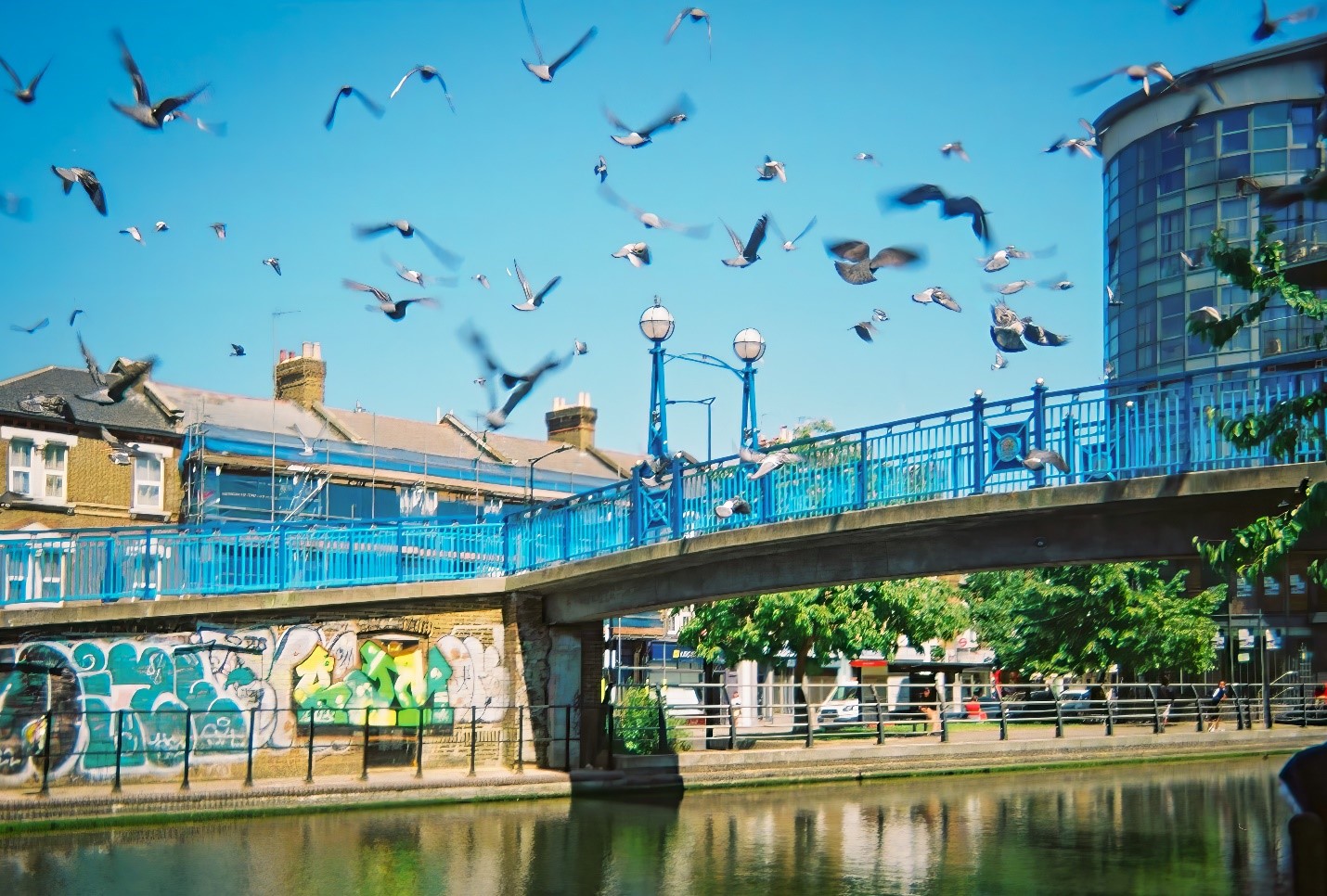
EuropeNow Logistically, how and where do you get the printing of the calendar done?
Paul Ryan The economic situation in the UK is tough at the moment. Fortunately, we get a generous discount from a local shop to process the films and print the photos. The calendar is printed by a company located north of London. Prices went up by 20 percent last year, but we only increased the price of the calendar by one pound—less than 10 percent. This year, there will be three sizes for the calendar. A few years ago, we reduced the size of the wall calendar from 300mmX300mm because of changes in the cost of postage, primarily to the US. Many Americans buy our calendar, which represents a substantial share of our online income. In 2020, the US Postal Service (USPS) started charging extra for any mailing larger than 240mm wide/tall arriving in the US. This would have meant an extra £5 to send the calendar to the US, raising the total postage cost to £15. That might have caused us to lose US buyers, so in response to the new fee structure, we decided to reduce the size of the calendar to 240mm. It was a good move in the end because we were not only able to retain our American buyers but we also saved money in printing costs, and it also became cheaper to mail the calendars to other places throughout the UK and the EU.
Inflation has been tough in the UK since Brexit—higher than in most other countries. We have to think about whether people will even buy the calendar when they are worried about paying their electricity bills, their gas bills, or their food. Why would they buy the calendar? We have always made it as attractive as possible—a quality publication. This year, I polled people via a Survey Monkey to know what they liked about the calendar and whether they missed the larger [300mmx300mm] calendar, which many people in the UK did. So, this year we are going back to printing a larger wall calendar, but I do not expect to sell many online to overseas buyers, because of the shipping costs. Regardless, most buyers of the wall calendar, large or small, will probably be face-to-face commuters or people at Spitalfields Market. We hope Americans will continue to purchase the smaller size calendar on our website.
EuropeNow How did you personally get involved in the organization and with working with people affected by homelessness more generally? How do you approach your role as a “changemaker”?
Paul Ryan I trained as a journalist in New Zealand, then worked as a magazine editor in London for seven years before moving to Canada in 2004. In Vancouver, I worked for a legal aid nonprofit organization called Pivot Legal Society (PLS). They take on cases that, if won, can change the law in a way that helps marginalized people, such as drug users, sex workers, or people who are homeless or live in substandard accommodations. A victory in court can help many people across British Columbia or wider Canada. I joined PLS to work on their communications and managed their photography project called Hope in Shadows, which still exists and is now run through a street paper called Megaphone. Every year, we handed out cameras, which we got from Fujifilm Canada, to people living in Vancouver’s Downtown Eastside—Canada’s poorest postal code. When I came back to London in 2012, I was looking for a job. I loved my job with PLS and I love London, so I approached Fujifilm in the hope of creating a project similar to Hope in Shadows in London. In the first year, although I did not get free cameras, I was able to buy 100 at cost. That was in 2013, exactly ten years ago in July.
When I came back to London in 2012, I attended a short training course with PhotoVoice, a nonprofit organization that trains people in using digital cameras for small photography projects. I told PhotoVoice about my project, and they gave me useful feedback. For example, they indicated that it is important for everyone to participate in the final outcome of the project. In our original project, only the top 20 photographers received prizes and got their photos featured for the public to see. Since 2013, we have changed the method and now let everyone choose three of their photos for an exhibition every year.
I also changed my approach about telling people’s stories along with featuring the photos they took. As a trained journalist, I initially felt that the MyLondon calendar was the perfect opportunity to tell the stories of people who are homeless and connect the public with these stories. In Vancouver, the Hope in Shadows project was different because the participants were not necessarily homeless; they were marginalized or living in poverty, and what I was trying to do was to connect them, not so much tell their stories. In London, I interviewed people and wrote down they stories of homelessness. However, over the last few years, I have changed my views on telling people’s stories in the actual calendar. The way to bring in the public has always been to focus mainly on the photos that were taken of London. I feel that we should only cover stories about people in other venues, for example through blog posts—if people want to talk about their lives. Some people do, but many are happy to keep their private life private. It does not mean that we cannot say that the project helps people who have been affected by homelessness, but we do not have to share everything and every single person’s story. Having said that, sometimes people want to talk about what they have experienced. As a matter of fact, in the 2023 calendar, there was a man who had been in the care system—similar to an orphanage—did not have parents, and went through a tough time. He wanted to share that he got through it and tell his story.
EuropeNow What are the main goals of the MyWorld project? And what have you learned about homelessness from your activities outside the UK through that project?
Paul Ryan MyWorld was set up as a registered charity to help other cities do their version of a MyLondon project. The goal is to try to help cities on a one by one and case by case basis, whether they are located in the UK or elsewhere in the world. Before officially setting up MyWorld, we had already helped Budapest do their MyBudapest, as well as New Orleans, Toronto, Sydney and Perth in Australia, and São Paulo in Brazil. In those cities, we introduced the local organizations to Fujifilm and they received 100 cameras to run the project themselves.
This year, we will help Mumbai create MyMumbai. The set up is a little different because we are more directly and closely involved there, as we assist Pehchan, a small local charity for which running such a project alone would be quite a large task. We had already worked with that organization through Café Art’s first international project, which was called “This Is Where I Live” and consisted in a homeless art exhibition exchange. Pehchan was part of that project in 2017. We will work on restarting this painting exchange at the same time as we organize the photography project in India.
Pehchan has excellent local contacts such as St. Xavier’s College, which will help with the distribution of the cameras and hold the exhibition. Pehchan assists 300 families who live on the streets of Mumbai to get ID verified and to access services they would not be able to access otherwise since they live on the street. Some of these people have lived on the street for generations; you might have children living with their parents and grandparents. The children might be schooled and most of the parents actually work— they are taxi drivers, cleaners, etc.
Additionally, British Arya, Pehchan’s founder, wants to include a digital element in the project. So, not only will we distribute some disposable film cameras, but we will also make digital photography part of the project. When I visited Mumbai in April to do a preliminary assessment, one thing I found interesting is the fact that India has been swamped with very cheap digital phones from China, so everyone has them. I visited with families that do not have a home and live on the street, but the children all have smart phones. However, it does not mean they are connected or that they have contracts that allow them to access information like we do. They might have access to basic wifi and services like WhatsApp. Aside from working with Pehchan, we hope to also collaborate with UCL in London and the University of Sydney, which work with Pehchan too. In Mumbai, we will look for a local printer for the calendar. The goal will be to sell to wealthy residents of Mumbai, and calendars will be available on our website for overseas buyers.
EuropeNow What are some challenges you have encountered in managing the MyLondon project? What are some of the challenges you anticipate in running the MyWorld project?
Paul Ryan Many things have changed over time. Obviously, COVID-19 had a huge impact. In 2021, because of the pandemic, we switched to digital photography and did an all-digital contest. Last year we returned to disposable film cameras and are using those again this year. However, I think it might be time to move all the way with the digital medium. When we started the application process to become a charity, the trustees debated whether we should go straight to digital images or stick with film cameras. At the time, I advocated for film cameras because I felt that it provides an even playing field. My thinking was that 100 people all receive the same camera, and nobody is advantaged because they have a better phone. Moreover, film cameras are easier to process: you just have the films developed and get the pictures. In the last few years, I came to realize that participants now all have phones with cameras; it has actually become harder to motivate people to participate because of the film cameras. People are used to taking photos on their phones and are put off when they cannot see the results right away on their screens.
Moreover, the cost of film processing has increased substantially, as has the price of cameras. We are grateful to Fujifilm for the QuickSnap cameras, but we know they are expensive. We get a huge discount to develop the films and print the photos, but it is still a lot more expensive than printing digital photos. The answer will probably be to transition to using both media alongside each other. The challenge for us is to make the technology work for us while also keeping things simple. Digital technology also means that we need additional volunteers to go out there and connect with people to upload their pictures. Another challenge is that it might also be difficult in some places to keep the project going year after year, as we have done in London. For example, Sydney would like to organize the MySydney project again, but it depends on whether they are able to secure a local team of volunteers.
Now that MyWorld has been registered as a charity, we can start raising funds. We will approach foundations, such as the British Council, which funds projects in India, to help with MyMumbai. We will also contact the people who have been buying the MyLondon calendar. We already have the cameras from Fujifilm for MyMumbai; we also have the location and the volunteers. All we need is funding to print the photos and calendars. When we set up MyWorld, we decided that making a calendar would not be a prerequisite, but Pehchan indicated that they would like to produce one, so we hope to print 1,000 MyMumbai calendars for 2024. My goal for Mumbai this year is to make the project successful at least once. We will create something with the Indian organization—a beautiful calendar—and introduce them to all the people who have supported us. At the same time, we will cast light on that local charity and all it does for people there, not only through art. We will also hopefully help wealthy people who live in Mumbai realize that there are homeless people living in their city.
EuropeNow The MyLondon project has allowed you to come into contact with homelessness around the world. In your experience working with people affected by homelessness and nonprofit organizations in countries outside the UK, what are some shared experiences and how does homelessness differ for example in places like Mumbai or Budapest?
Paul Ryan I cannot speak for the different situations in the other countries, as they are different in many ways. For example, in central Mumbai, there are hundreds of multi-generational families living in temporary shacks with plastic walls. They have been there for years, I was told. According to research conducted a few years ago, more than 70 percent of the adults living in these temporary structures work full-time. In Mumbai, the project is about spreading the word about the existence of people living in poverty or on the street. Whereas in the UK it is not so much about highlighting the existence of people who are homeless but about helping individuals gain confidence through creativity and through the experience of having their work in an exhibition or printed for people to buy.
EuropeNow You are meeting me here in the hotel where your organization has been hosted and where I can see in the background some framed artwork or photographs. What is the story behind your connection to the hotel?
Paul Ryan The Corner Hotel is a refurbished office building in London, which was probably built in the 1940s or 1950s. In 2013, when we first launched our calendar, we met two businessmen from Amsterdam who were opening it as a Qbic Hotel. They wanted to use the basement to house different charities and social enterprises. In the end, when they opened in November 2014, they only had space for one, and since then we have been here in the hotel. Since 2014, the ownership has changed, and we have moved around different rooms in the basement. The hotel has filled its walls with pictures in the staircases. And in 2017, the hotel commissioned us to take photos of east London; now, in every room there is a photo taken by a homeless person. Another amazing event for which I am very grateful was the fundraising event that was hosted in the hotel this past June, as we officially launched the MyWorld charity and raised funds for the MyMumbai project. Our corporate connections and volunteers attended and voted on the new MyLondon Top 25 photos to help us choose which to include in the 2024 calendar.
EuropeNow Personally, how did you get so passionate about working on behalf of people who are homeless?
Paul Ryan I have always sought out jobs where I felt I could make a difference and help people. In New Zealand, where I am from, my first job involved working at the New Zealand Employment Service to help people find jobs. Then, in London in the late 1990s and the 2000s, I was the editor for an education magazine called Montessori International. I worked with teachers of young children who were passionate about teaching and making a difference too. I felt that I was doing something creative while also helping others. The magazine was sold to over 100 countries, and I organized everything from editing to production and distribution. It provided me with useful experience to manage MyLondon. In Vancouver, Hope in Shadows made a tangible difference in people’s lives. I helped people who had lost all hope and were suddenly feeling recognized. Even if it is just one photograph that is seen by the public, it can change people; it can make a difference. They say art is like therapy. Indeed, it is a positive way to make a difference to help people in their time of need. Personally, I enjoy doing this job because it is about being creative and helping people at the same time.
EuropeNow Do you have a way to assess how many people you have helped over the years? Do you know how many people who participated in the project are no longer homeless?
Paul Ryan We monitor people as they participate in the project, but sometimes it is difficult to quantify the results. I do know that some of the people who have been involved have gone on to do amazing things as photographers or are now running other homeless projects in London. What we do is help people through creativity and art; many of the people we help are already on the right path, so it is difficult to measure the specific impact we have. But I am proud that in the last ten years we paid out more than £200,000 to people and successfully ran our projects by selling calendars and cards. It is easier to focus on the financial aspect. We know how much money people have earned through the project and that it has kept them off the street. They have been able to buy clothes and food. That is quantifiable.
EuropeNow What is the current structure of Café Art and MyWorld? Are you mostly running these projects alone?
Paul Ryan We are very small but work with a large number of volunteers. Many emanate from The Royal Photographic Society, which runs a weekly photography group where people learn about digital photography. Café Art started with two directors, Michael Wong and myself, and employed two people for several years before COVID-19 halted many activities. In late 2019, both employees—one of whom had lived a recent experience of homelessness—decided to move on, and we did not replace them. It was a good thing because we would not have been able to keep them throughout the pandemic. Since the end of the COVID-19 lockdowns, we have focused on the MyLondon project and the art rental. Now that the MyWorld Creative Projects charity has been launched, our goal is to apply for funding to help additional cities. Mumbai will be the first one with MyMumbai taking place in September.
EuropeNow What other events do you have coming up to which our readers might be interested to connect?
Paul Ryan In July, we are holding several additional public votes for this year’s Top 25 photographs, with the help of the company that operates the Elizabeth Line, one of the most traveled underground train line in London. We will also sell greetings cards, with 100 percent of the profits going to the photographers. In early August, we will have an exhibition in Spitalfields Market, which will showcase three photos by each of the participants. We will also hold an event to launch the 30-day online pre-sale campaign for the 2024 MyLondon calendar. It is similar to a Kickstarter, but using our own website saves us on the commission. People can go to our website and participate by choosing the photos to be included in our next calendar.
Paul Ryan is the co-founder of Café Art (2013) and founder of MyWorld Creative Projects (2022). Both organizations focus on empowering people with lived experience of homelessness through art and photography. The main project is MyLondon, a “camera to calendar” project involving a photography project that results in an exhibition and publications sold by the participants, the main one being a calendar. Ryan is a New Zealander who has lived in New Zealand, Canada, and the UK and currently lives in Mussel Hill, north London.
Hélène B. Ducros (JD, PhD, University of North Carolina – Chapel Hill) is a human geographer with expertise in cultural landscapes, identity, and local heritage preservation. Her latest book (with Brian Petersen) is Justice in Climate Action Planning (Springer Nature, 2022). She is the editor of EuropeNow Journal and founding chair of the Critical European Studies Research Network at the Council for European Studies.
Additional information about Café Art can be found here and about MyWorld here.
References
[1] Department for Levelling Up, Housing & Communities (28 February 2023). Rough sleeping snapshot in England: Autumn 2022. https://www.gov.uk/government/statistics/rough-sleeping-snapshot-in-england-autumn-2022/rough-sleeping-snapshot-in-england-autumn-2022
Published on July 12, 2023.

